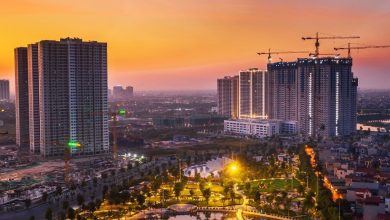
Philippine Tech Landscape Changes in the New Normal
Technology holds the key to progress. This has never been more true in the time of social distancing and health quarantines. In a span of a year, Filipinos were forced to rapidly adapt to technological solutions. How has the Philippine Tech Landscape changed in 2020, and what is its role in the New Normal?
Let’s narrow it down. The aim is not to provide a comprehensive list of the technological advances in the time of the pandemic. Instead, let’s look at how the lives of Filipinos, specifically, have been impacted by technology.
These things have existed previously. However, they have now ceased to be just options – they’ve actually become necessities. The following have now become an inextricable part of existence in these times. Hopefully you get an idea of the bigger picture of the changes we are experiencing in this new chapter of technology. The world is changing fast, and adapting to these changes holds the key to our survival.
Working (and Conducting Business) From Home
The biggest (and for many, the most challenging) technological shift in the pandemic is the reliance on remote work. Of course not all are fortunate enough to be in industries that can be operated remotely. But for those who are, the past year has been a “proof of concept” of a new way of working.
Despite the challenges of having a stable internet connection in our country, Filipinos had a taste of true remote work in 2020. Both private and public sectors had to keep an open mind and find a way to operate beyond the confines of traditional office spaces. Video calls are no longer just reserved for meetings with foreign clients or suppliers. They have now become standard practice across numerous industries.
What this has brought Filipinos is a new way of working and doing business. More traditional companies who had the regular 9-to-5 setups now turn towards technology. Messaging and video conferencing apps have now become the lifeblood of companies. It’s challenging, but it’s necessary, in order to keep everyone safe.
It’s an uphill climb, but the Department of Information and Communications Technology (DICT) has been pushing for better connectivity in this time video conferencing. Under the Duterte Administration, the DICT is pushing for the 2021 National Broadband Plan (NBP). This nearly ₱2-billion initiative aims to improve our telecom infrastructure. Hopefully, we’ll soon see the benefits of this major change in the Philippine tech landscape.
Expanding Options for E-commerce
The next necessary change that happened in 2020 is the slow but steady acceptance of buying and selling online. Yes it has existed before, but E-commerce has now become the preferred option for Filipinos who are fortunate enough to have internet connections and of course, purchasing power.
Everything is now literally becoming available online for Filipinos. We might be a little late to it, as some countries like the US have enjoyed robust E-commerce platforms for quite some time now. However, you may have noticed that it’s now become easier and more secure to buy things online and have them shipped directly to your house.
E-commerce provided a much needed push for our local economy during the times when standard brick and mortar stores were closed. Filipinos have fully embraced platforms like Shopee and Lazada in order to get not just the odd furniture or tech item, but even groceries and other essentials.
Even Transport Network Vehicle Service (TNVS) companies Grab and Angkas delved into food delivery service during the pandemic. Together with Foodpanda and all the other delivery services, they’ve not only provided options for Filipinos who miss dining out. These companies provided livelihood for riders as well as restaurants in a time when everyone was stuck at home.
Mobile Wallets and Cashless Transactions
This rise in the prevalence of E-commerce has led to to an acceptance of a new form of exchanging money. “Mobile Wallets” like GCash, Paymaya, and Paypal have become more viable ways of paying. Sure they existed before, but it wasn’t anything close to how big they are right now.
It’s interesting to note how we’ve embraced these options in the past year. Like in other countries, the Philippines is now slowly pivoting to cashless transactions. GCash, one of the more popular mobile wallets, reported a staggering ₱1 trillion in transactions in 2020. At its peak, ₱7.5 billion was being transferred between GCash accounts in a single day.
E-commerce has in fact had a huge impact on the economy in the past year – and all signs point to it continuing. In fact, E-commerce drove a 55% growth for the Philippine digital economy in 2020. This is according to a report called e-Conomy SEA 2020, released by Google, Temasek (an investment company) and Bain & Company (a global management consulting firm). It’s interesting to note that this growth has actually offset the decline in some industries that were hit during the lockdowns.
New Normal, New Tech Habits
It’s not without its challenges, but the Philippine Tech Landscape is slowly but surely changing towards something better. Hopefully we’ve painted a picture of the direction our society is heading. It feels like the beginning of something great – and these changes show just how resilient and adaptable Filipinos are.
There’s no two ways about it – we need to embrace technology if we want to survive and thrive in the New Normal. We need to acknowledge these changes and keep talking about them and sharing them to those who don’t know just how huge of an impact they have on our lives today.
RELATED: 2020 PH Economy Struggled, but is on a Path to Recovery




